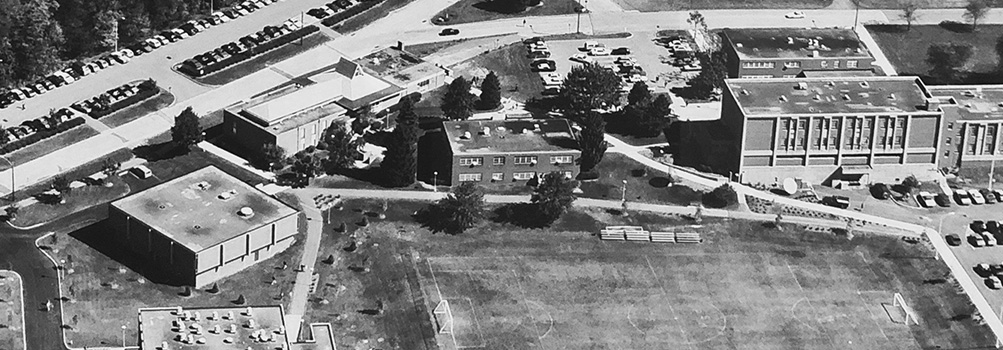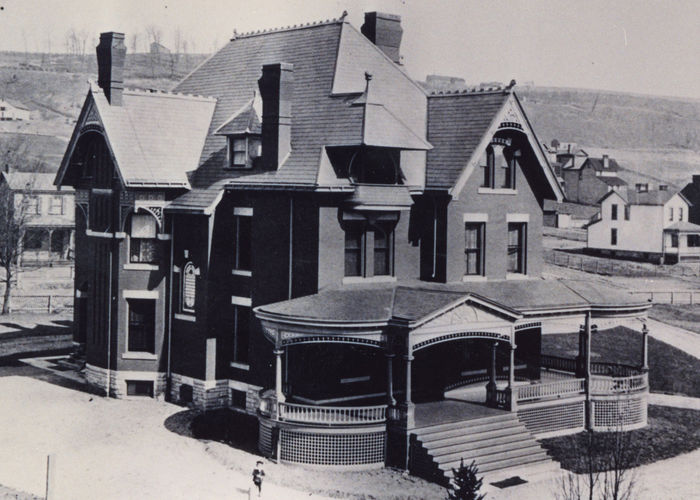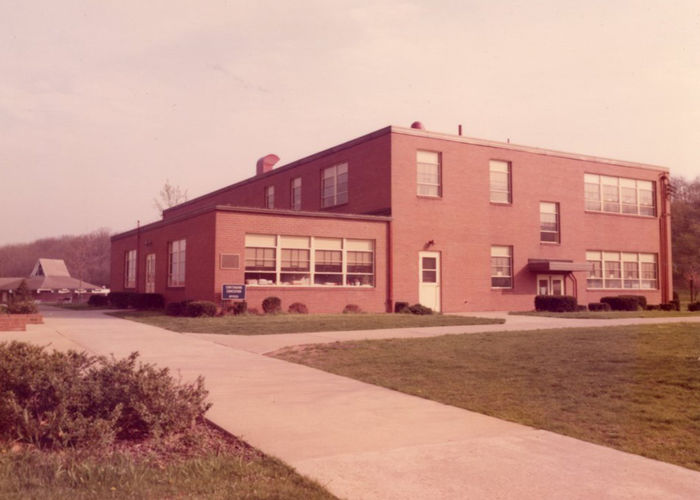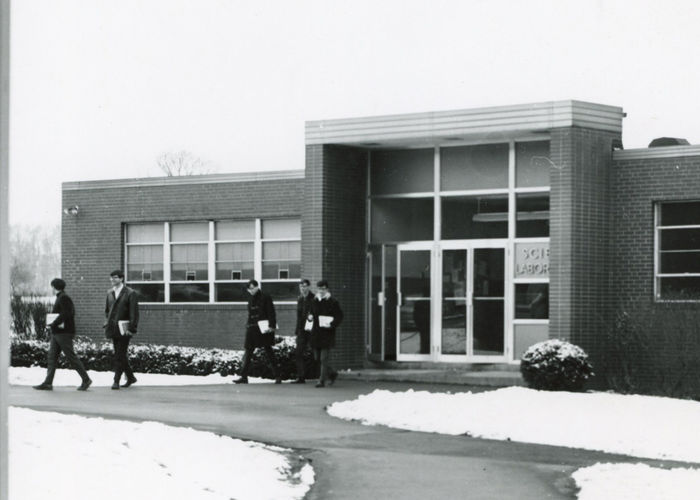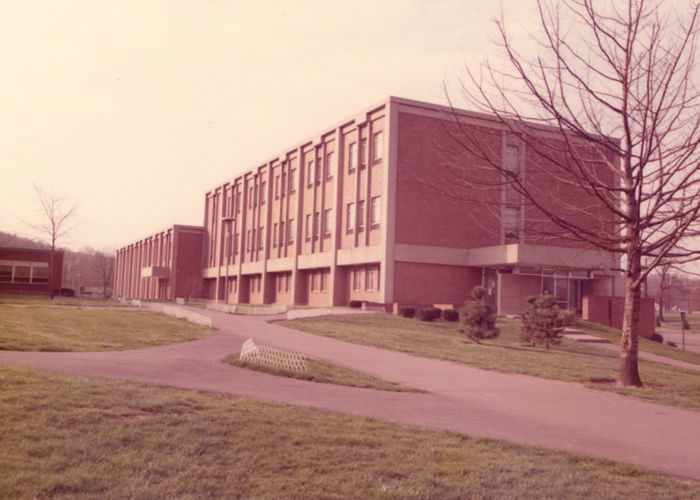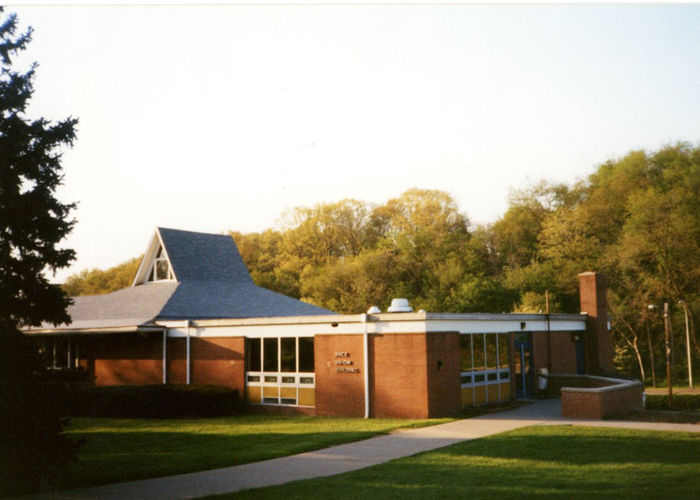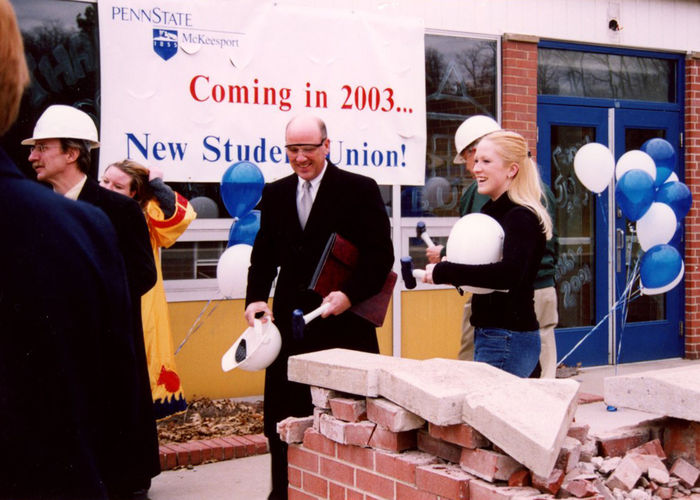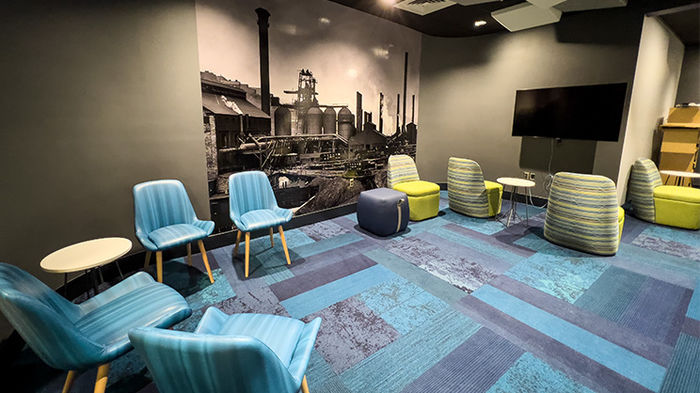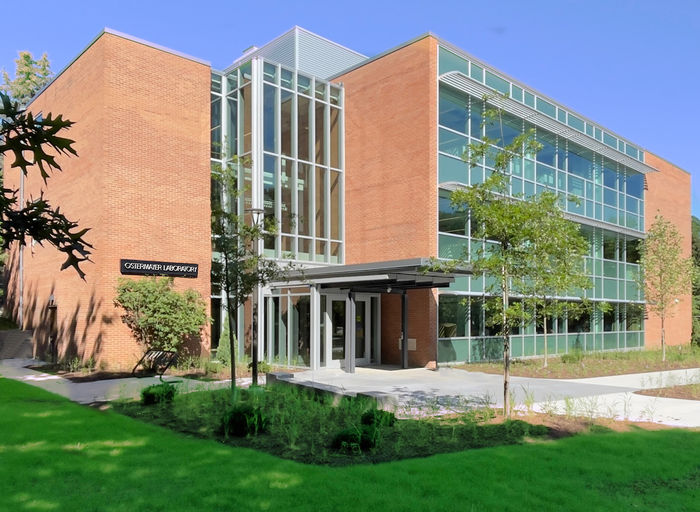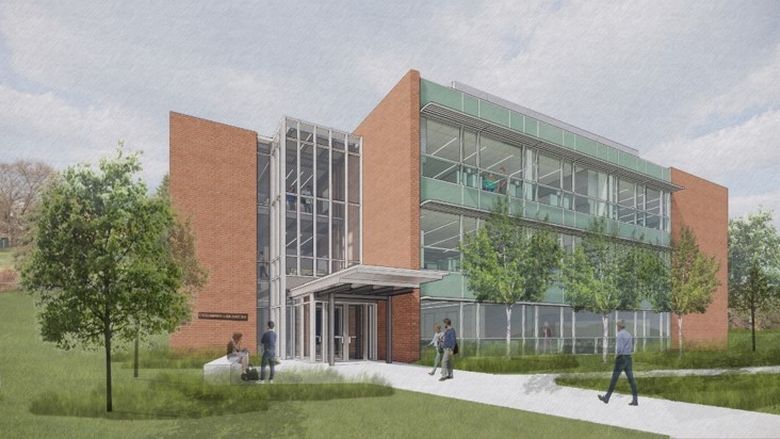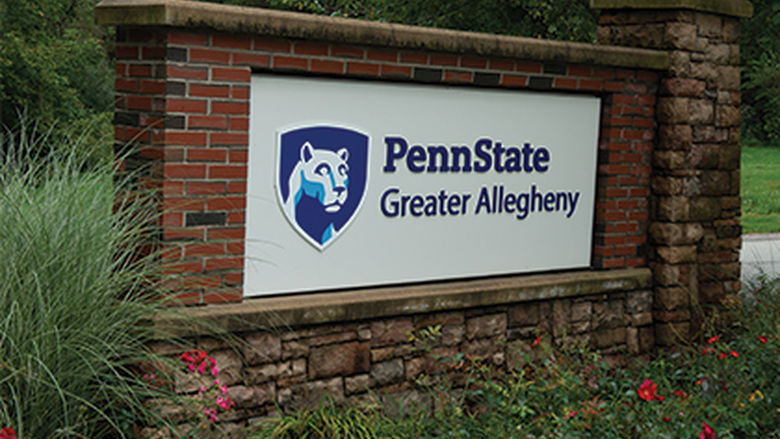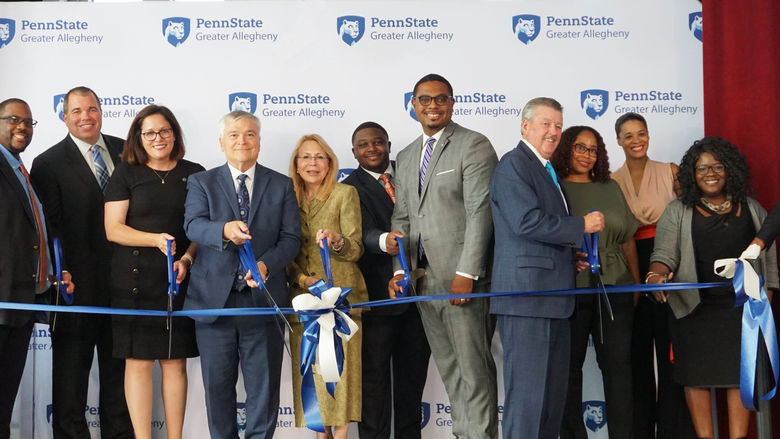On January 19, 2007, the Penn State Board of Trustees formally changed the name of Penn State McKeesport to Penn State Greater Allegheny. The name change reflected the evolving and expanding presence for the campus in the region.
Penn State Greater Allegheny is the only Penn State campus in Allegheny County and the closest campus to the city of Pittsburgh. More than 16,000 Penn State alumni live in Allegheny County -- the largest concentration of alumni residing in any one county in the nation -- and approximately 4,000 Penn State students hail from the county.
The campus is proud of its vast and ever-changing academic and cultural history. With more than seventy years of service to Western Pennsylvania at our current site between White Oak and McKeesport, Penn State Greater Allegheny is a leader in academic excellence, technology, and diversity.
Origins and Expansion
Penn State Greater Allegheny celebrates a long and committed partnership with the Pittsburgh region. Since its beginning at the current location in 1957, the campus continues to play a dynamic role in the Greater Pittsburgh area, bringing the resources of a nationally prominent university to students of all ages.
As early as 1934, the Pennsylvania State College offered technical courses in various locations in Pittsburgh and McKeesport to train industry workers.
In 1948, The McKeesport Center of the Pennsylvania State University opened in Dravosburg to provide occupational training and self-enrichment courses for returning veterans.
The Center moved to McKeesport in 1952, established associate degree programs, and graduated the first students in 1955. That same year a group of area businessmen formed the Advisory Board of the McKeesport Center of the Pennsylvania State University to begin a search for a permanent location for the McKeesport Center. Milton F. Frable became the first Advisory Board president.
Growth and Development
William L. Buck, a local realtor and philanthropist, donated a ten-acre tract of land, adjacent to Renziehausen Park, to the University in 1956. The following February, the Center moved into the first permanent building on the site, the Main Building, and officially became “The McKeesport Campus of The Pennsylvania State University.”
From the late 1950s through the mid-1970s, student enrollment increased and several buildings were constructed to accommodate growth. In 1959, along with the completion of a science building (now the E.R. Crawford Building), the campus began to offer the first two years of baccalaureate degree programs. The Buck Union Building, fondly referred to as the BUB, was completed in 1961 and gave students a multi-purpose facility for activities.
In 1969 the Frable Building was added, and Mr. Buck’s gift of additional acreage in White Oak provided a site for the Residence Hall and Food Service buildings. During the 1972-73 academic year, three more buildings were completed in honor of campus benefactors: Ostermayer Laboratory, Wunderley Gymnasium, and Kelly Library.
The Maintenance Building opened in 1976 to accommodate physical plant operations. Conference facilities in the Frable Building were added in the 1980s.
The 1990s brought many changes to the campus, including new computer labs and multi-media classrooms. The campus began offering four-year degree programs (see Academic Programs) to better serve our students and communities.
Advancements in the 21st Century
In 2002, the Buck Union Building was torn down to make way for the Student Community Center. "The Last Dance at the BUB" attracted alumni, friends, and members of the campus community for a farewell celebration. In recognition of the Buck family's contribution of land, the campus named the new green space in front of the Student Community Center "The William L. Buck Family Green." A plaque recognizes the family for making the growth of the campus possible to advance educational opportunities to the region.
In 2003, the campus community celebrated the opening of the $5.5 million Student Community Center. The 25,000-square-foot facility is located in the heart of the campus. Student life is a significant part of the college experience and this facility is the central meeting place on the campus. Students have a place to have a meal with friends, interact with faculty, study in small groups, relax, or listen to music. The Student Community Center houses both student and campus programs, including music and theatre productions, guest speakers, multicultural events, job and career fairs, and public forums. Funding for the new Student Community Center came from a variety of University sources and from private donations.
A student Fitness Center opened in what was once the Food Services building in 2005. The popular center houses dozens of cardio machines and more than twenty plate-loaded weight machines. More than $130,000 worth of equipment is spread out in nearly 4,000 square feet of floor space. The campus continued to embrace new technologies. It was among the first campuses to implement wireless technology for PC application. All of the campus' buildings now operate on a wireless network. In addition, multimedia classrooms provide expanded learning experiences, and many computers are equipped with specialized software for chemistry and physics modeling, engineering, business and information sciences and technology applications, among others.
In 2004, faculty began formally internationalizing the curriculum to better prepare graduates for life and work in the global society. The inaugural project of what is now called in general Teaching International was Teaching Haiti 2004.
In 2005, the campus was designated an international campus, meaning that we became one of the official destinations at the University for international students.
In 2007, the name of the campus was officially changed to Penn State Greater Allegheny to better reflect the campus' expanded mission.
Present-Day Innovations and Initiatives
In 2018, the campus embarked on its Digital Fluency Project, a visionary initiative aimed at fostering digital equity and innovation. Originally conceived as a one-to-one device program, it swiftly evolved into an immersive endeavor that sets a standard for innovation campus-wide. Under this initiative, every faculty member, staff, and student receives an iPad®, equipping them with a comprehensive suite of digital tools for coding, collaboration, problem-solving, and creative communication. This integration of cutting-edge technology seamlessly blends with the expertise of our faculty and staff and the inquisitiveness of our student body. By leveraging these shared tools, we aim to reduce financial burdens on students while ensuring universal access to software available in our computer labs.
In 2019, Penn State Greater Allegheny partnered with the City of McKeesport and Invent Penn State to establish the Mon Valley Launchbox, an innovation hub dedicated to supporting local entrepreneurs, situated at 410 9th Street in downtown McKeesport.
By 2021, Penn State Greater Allegheny had revolutionized its on-campus recreational experience with the enhancement of the Student Community Center's game room. Developed and sanctioned by the Student Facility Fee Committee, the redesigned space blends modern and industrial aesthetics, featuring five 70-inch TVs, gaming consoles including a Sony PlayStation, Nintendo Switch, and Microsoft Xbox, alongside classic arcade machines.
Continuing the trajectory of growth and modernization, Penn State Greater Allegheny initiated a $14.7 million project in 2021 to modernize the Ostermayer Laboratory. This renovation enhanced teaching and collaboration spaces, equipped the laboratory with state-of-the-art equipment, and improved energy efficiency through design elements like a three-story curtain wall entry and increased natural lighting.
In 2022, Penn State Greater Allegheny added a new Bachelor of Social Work (BSW) degree program, providing broad-based educational experiences for undergraduate students interested in working in the private and public sector, is now offered at Penn State. Students can start the degree at any Commonwealth Campus, and can only complete it at Penn State Greater Allegheny in McKeesport.
With the ever-evolving landscape of Greater Allegheny's Digital Fluency Project, the campus in 2022 was recognized as an Apple Distinguished School 2022-2025, making the campus a center of innovation, leadership and educational excellence through using Apple technology to inspire creativity, collaboration and critical thinking in learning, teaching and the school environment, with documented results of academic accomplishments.
In 2023, The campus further enhanced its facilities with the addition of the Commuter Lounge within the Student Community Center. Conceived by students and funded through the Student Initiated Fee, this space serves as a focal point for on-campus activities, quiet study areas, and relaxation between classes.
The Mon Valley Launchbox relocated to 225 5th Ave. in 2023, marking a new chapter in its mission to foster business growth and development, continuing to drive innovation and economic empowerment, serving as a catalyst for transformative change within the Mon Valley community.
In 2024, Penn State Greater Allegheny launched its Growing Older initiative in partnership with Allegheny County Area Agency on Aging. This initiative was dedicated to supporting and engaging with aging populations in the Pittsburgh region. Through education, research, and community partnerships, the initiative explores the challenges and opportunities associated with aging while providing students with hands-on learning experiences. By connecting faculty expertise with local organizations and resources, Growing Older reflects Greater Allegheny’s commitment to lifelong learning, social impact, and community enrichment.
Today, close to 400 students are enrolled on our campus, pursuing their studies across 13 bachelor's and associate programs. These students are drawn to a learning environment that offers accessibility, flexibility, and a diverse array of academic options. Penn State Greater Allegheny proudly stands as a vital component within the network of 24 campuses that collectively form The Pennsylvania State University.
Campus Leadership (1999-Present)
- Dr. Megan L. Nagel, Regional Chancellor | Penn State Fayette, The Eberly Campus, Penn State Greater Allegheny, Penn State New Kensington 2024-present
- (Chancellor and Chief Academic Officer 2024)
- (Interim Chancellor and Chief Academic Officer 2022-2023)
- Dr. Jacqueline Edmondson, Chancellor and Chief Academic Officer, 2017-2022
- Dr. Andrew Egan, Chancellor, 2016-2017
- Dr. John Peles, Interim Chancellor, 2016-2016
- Dr. Nancy Herron, Interim Chancellor, 2014-2016
- Dr. Curtiss E. Porter, Chancellor, 1999-2013
